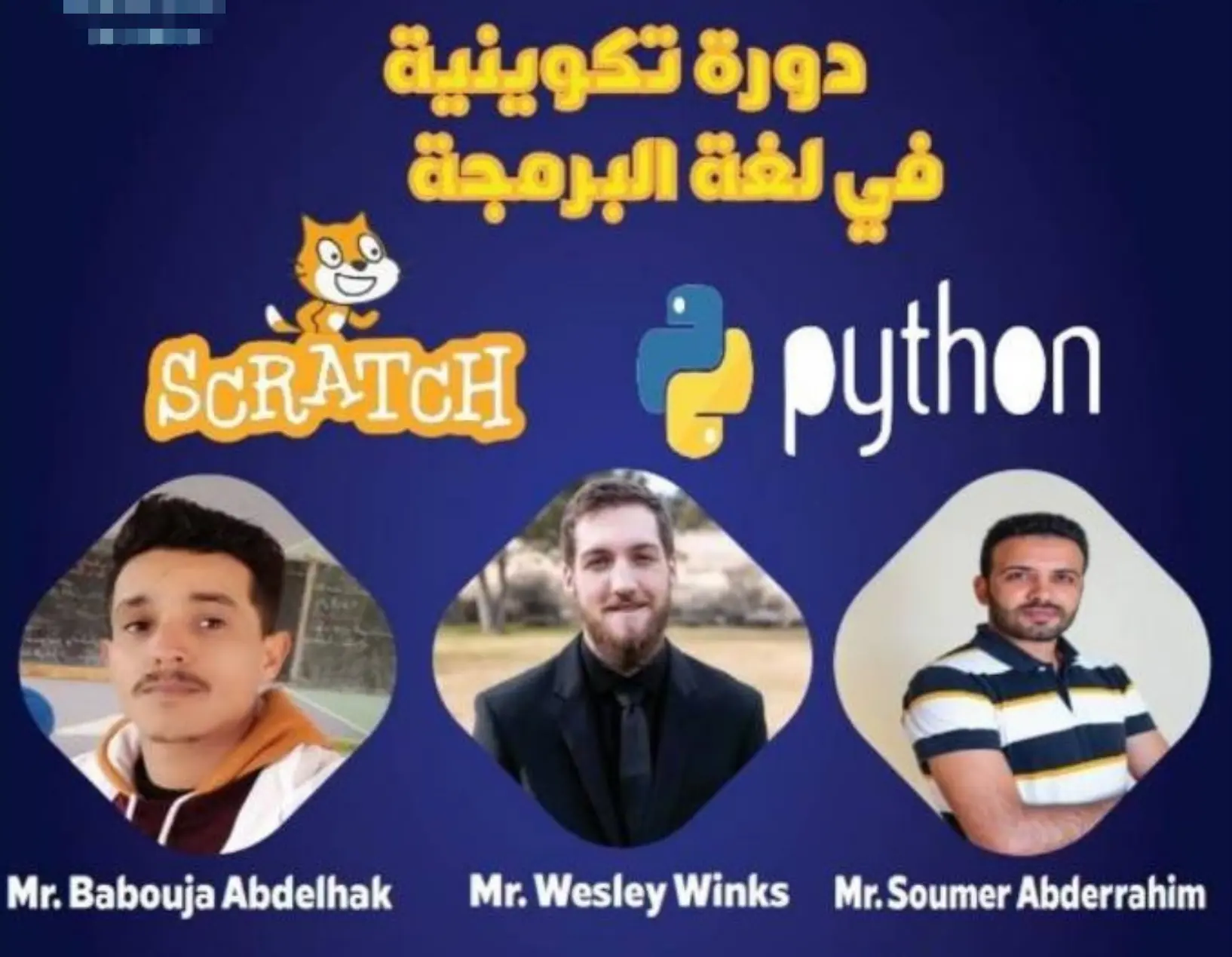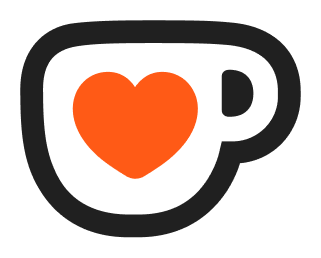If You Can Read This, You Can Learn Anything
Note: this is my submission for the IndieWeb Carnival October 2024 blogging challenge Multilingualism in a global Web by Richard Zin.
It was One World. The old names of the old countries were still used , but they were no more than convenient postal divisions. There was no one on earth who could not speak English, who could not read, who was not within range of a television set, who could not visit the other side of the planet within twenty-four hours.
Arthur C. Clarke, Childhood’s End
لغة البرمجة بايثون
It’s hard to take a grown adult seriously when they have the vocabulary and grammar structure of a 4-year old—especially when they are your teacher.
That basically summarizes my professional life for the last two years. My first taste of teaching (almost) entirely in Arabic was during my first Ramadan when I held computer coding classes for youth. This is already a difficult topic for complete beginners and it requires nuance to explain. I took the “draw pictures and make it interactive” approach instead.

There are fantastic resources for teaching any programming language in English, especially the one I was using, Python. There’s comparatively next to nothing in Arabic. I had to make all the resources and activities myself, typing in Arabic in my phone and copy-pasting it on my computer. You can’t even type and run Arabic letters in Python so my examples used Arabic words written with English letters. I would bounce back and forth between the two when necessary, rolling my Rs in one sentence and abruptly hitting students with my Pacific Northwest accent the next.
The students did end up learning something and, to my surprise, actually came back each session for the whole month! But I can’t help but imagine how much deeper their understanding and interest in coding would be if they could work fluently in their native language.
مهارات الحياة
My next bout with trying to teach something in Arabic was with a comprehensive life skills curriculum called Passport to Success. It’s a thick manual full of lesson outlines for skills like leadership, communication, emotional intelligence, and how to study. I thought teaching coding concepts was hard. Try talking about “what would you feel if…” and “how might you…” alongside abstract concepts like emotions, values, and workplace dynamics.
This time around, I had my host sister Hajar to co-facilitate sessions with. All of the resources and activities were outlined for us in my English manual and her Arabic one. We would meet a day or two before each session to plan activities, practice role-playing scenarios, and, mostly, teach me the language that I needed. I was in charge of making slideshows, “chicken pecking” my Arabic keyboard stickers one-by-one.
I’ve been using “Arabic” loosely here. For most Arabic-speaking countries, there are two different versions—the Arabic taught in schools and the Arabic that people actually speak at home. In Morocco, these two are wildly different. The colloquial version that is spoken in daily life (called Darija) is a mix of Arabic, French, Tamazight (indigenous language), and a little bit of Spanish. All of our slides, resources, and scenarios were in Arabic instead of the participants’ first language, Darija. I imagine it would be similar to a rural New Zealander teaching an American. Recognizable, coherent even, but not perfectly understandable.
It was difficult even for Hajar to understand the Arabic version, usually opting to read from my English manual instead. During the sessions, we’d usually have to translate the Arabic into Darija for the point to really get across.
تقوية المرأة اقتصاديا
The project I’m most proud of was a two-day workshop that two other volunteers and I spent months putting together. We brought ten volunteers and ten Moroccans from their communities to the capital to talk about digital literacy and women’s economic empowerment. We did have Peace Corps staff support and we had a volunteer do the English version and staff do the Arabic version right alongside each other.
Nobody had really done a project like this before so we were on our own with creating an outline, coming up with activities, and finding appropriate resources. I’m sure you can guess what happens next—there were plenty of resources in English, very few in Arabic.
One session was about misinformation. We gave the participants tips on how to identify it then provided them with an article to use what they learned to decide if it was real or fake. There were lots of such articles to choose from in English but comparatively little in Arabic. And that was just the start:
- The ratio of Arabic to English Google search results is incredibly low for the same search terms.
- There are thousands of examples of well-formatted CVs and résumés in English—not so much in Arabic.
- Templates and guides for applications like Canva or MS Office are in English.
It’s near impossible to learn something when you can’t even see an example or try to do it on your own.
Bridging information-language gaps makes knowledge more accessible
In all of these cases, there is a gap between available information and the linguistic ability to understand that information. Take the subheadings in this article for example—they provide information for what each section is about but you probably don’t understand it. You can bridge that gap by either: 1) understanding the language the information is in or 2) finding the same information in a language you do understand. So, there are two ways to make the world’s knowledge more accessible:
- One-to-one. Each one resource (video, document, podcast, etc.) is in one language. Everyone agrees on the digital lingua franca and everyone has equal opportunity to learn it. This creates bridges because people will be more likely to understand the language a given information is in (1).
- One-to-many. Each one resource is translated or interpreted into many different languages. All people have equitable access to the same information in their native language that they understand deeply. This creates bridges by making it easier to find any given information in a language people understand (2).
The current digital landscape has some features of the one-to-one scenario. An estimated 50% of websites on the internet are in English. Spanish is the second most popular, taking a mere 6% of websites on the internet. Internet culture has collectively accepted that English is the lingua franca. And that makes sense. English has the most speakers in the world of any language, if you include non-natives.
There are benefits that come with standardizing to one language. It creates a positive feedback loop caused by the network effect—the more people using English, the more value comes from you also using English. If this essay were written in Japanese, 121 million people would understand me compared to the 1.5 billion that understand what you’re reading now. It’s also amazing that I can talk to strangers on the internet from all across the world and we automatically understand each other by speaking a common language.
I don’t think everyone has the same opportunities to learn English, though. When we all use English to create content on the internet, we put the billions of non-English speaking people at a major disadvantage. They have notably less access to coding classes, life skills resources, and economic opportunities. Those of us in the English-speaking “in-group” have wildly disproportionate access to information that gives and empowers. Defaulting to English also removes important cultural context—cantinfleada in Spanish means something culturally different than “babbling on without a point.” ان شاء الله means something culturally different than “hopefully” or “God willing.” Some things don’t have direct English translations.
The hard part, of course, is actually converting all of our collective information into many languages. How would a native Thai speaker read exactly what I’ve written here? In an ideal future, there would be an internet where every resource has many interpretations and languages attached to it. Like how software projects crowd source their translation work, it would be for the entire internet. Maybe there’s a button that says “Want to translate this page? Click here!” Online spaces would no longer need to be “English only.” But that’s a monumental endeavor that doesn’t scale and would have its own set of problems.
Equitable access to information is the ideal case. Maybe we can have it in a few decades when computer translation can better convey meaning for a variety of media. Or maybe we can get closer when there is equitable, free access to English learning. For now, I think it’s worthwhile for people to create content in their native language.1 It will take time and less people will understand what you put out. But those that do understand have likely been unrepresented in the digital world since its inception. It’ll be one of a few pieces of information available with no language gap for a handful of people. It might just help those مساكن Moroccan youth and their linguistically 4-year old teacher.
-
Yes, I understand the hypocrisy here. It’s easy for me to say that when my native language is already the dominant internet language. ↩
Like my writing?
Say thanks by buying me a coffee or send me an email with your thoughts.
Keep Reading
DISCLAIMER: The contents of this website are mine personally and do not reflect any position of the U.S. Government or the Peace Corps.
 Buy me a coffee
Buy me a coffee